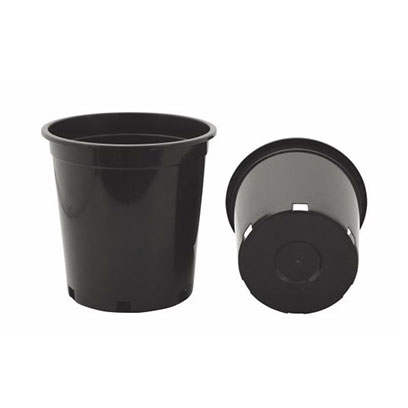Cyclamen Leaves Turning Yellow: Reasons and Fixes
Introduction
Cyclamen plants are cherished for their delicate, upswept petals. Cyclamen plant leaves turning yellow can be a disheartening sight. But fear not, there are a host of solutions. You can restore your cyclamen to its former glory.
Why Are My Cyclamen Leaves Turning Yellow?
- Overwatering
Cyclamen, like many plants, detest “wet feet”. When the soil doesn’t dry out between waterings, the roots can suffocate from a lack of oxygen. Root rot is a serious issue and the first sign is cyclamen leaves yellowing. It often starts at the base of the plant.
- Underwatering
Cyclamen needs consistent moisture but should never sit in water. Regularly check the soil. If it feels dry an inch below the surface, it’s time to water. If the soil becomes bone dry, the plant will start to signal its distress by yellowing foliage. Since it’s pot-bound and in small, shallow plastic nursery pots, cyclamen will dry out quickly.
- Improper Lighting
Cyclamen thrive in bright but indirect sunlight. Too little light can cause yellow leaves on cyclamen plant. They start to die back. On the other hand, direct sunlight can cause bleaching and scorching.
- Temperature Stress
Cyclamen prefer cool climates. It can react dramatically to temperature changes. High heat can cause cyclamen yellow leaves, especially if the plant is exposed to direct sun.
- Pest Issues
Pests can sap the vigor of your cyclamen. For example, spider mites and cyclamen mites. They can lead to cyclamen leaves turning yellow and eventual loss of the plant.
Identifying Specific Symptoms
- Understanding Cyclamen Plant Yellow Leaves
Yellowing can occur in different ways. For some, it might start at the leaf tips, gradually working its way down in a V-shaped pattern. For others, the entire leaf might turn uniformly yellow. It’s important to note the texture. Are cyclamen yellow leaves still firm or soft? And are they wilting or remaining turgid?
- Is It Really a Problem?
At times, yellow cyclamen leaves mean nothing to worry about. Cyclamen, like many plants, shed older foliage to make way for fresh growth. This includes creating space for the seasonal change.
However, if the yellowing is sudden, widespread, and accompanied by other signs, there may be a more serious issue at hand. For example, cyclamen leaves curling or drooping. Overwatering, underwatering, or a variety of nutrient deficiencies might be the culprits.
- Investigate the Roots
Check the roots for health. If they appear waterlogged, soft, or decayed, it’s likely that overwatering is to blame. Conversely, dry, brittle roots could signal underwatering. Adjust your watering schedule accordingly. Ensure your 1 gallon nursery pots have drainage holes. This can avoid standing water around the roots.

Remedies and Solutions
- Adjusting Watering Schedule
To rectify overwatering, start by assessing your plant’s soil. If it feels damp to the touch, refrain from watering until it dries out. You can also use moisture meters to keep tabs on soil moisture.
Setting the pot in a tray filled with a couple of inches of water. Water your cyclamen from the bottom. Allow the plant to soak up the water it needs. Then, discard any excess after about 30 minutes. The bottom-watering method helps prevent the foliage and tuber from getting too wet. This reduces the risk of diseases and root rot.
- Proper Lighting Conditions
If light is the issue, finding the right spot for your cyclamen is crucial. Aim for a location with bright, indirect sunlight. If natural light is scarce, consider using grow lights to supplement the plant’s light needs.
If your plant has been overexposed to sunlight, give it shade for a while to recover. You can also use sheer curtains to diffuse the light. Remember to acclimate your plant gradually to any changes in light conditions to avoid shock.
- Temperature Management
Maintaining a cool environment is crucial for cyclamen, especially during warm months. Avoid placing them near heat sources or in areas with temperature fluctuations. If the weather turns hot, move the plant to a cooler location or consider using a fan to circulate air and reduce humidity.
- Pest Control
Inspect your cyclamen for signs of pests, such as aphids or spider mites. If you detect any, treat them with an appropriate insecticidal soap. Following the manufacturer’s instructions carefully to avoid harming the plant.
- Soil and Pot Considerations
Ensure your cyclamen is potted in well-draining soil. This can prevent water from accumulating around the roots. Using a mix of potting soil and perlite can be beneficial. Additionally, select a half gallon pot with drainage holes and an appropriate size relative to the plant.
Additional Care Tips
- Humidity Maintenance
In drier environments, especially with indoor heating, the humidity level can be raised to their liking. Try using pebble trays filled with water or investing in a room humidifier.
- Pruning and Maintenance
Do you spot yellow leaves on cyclamen plant? It’s time to snip them off! Pruning allows the plant to redirect nutrients towards healthier growth. Use sanitized scissors to prevent the spread of pathogens. Trim close to the stem. You should remove any faded flowers to encourage new blooms.
- Fertilization
Fertilizer is the icing on the cake of a well-rounded care routine. But be wary of going overboard. Too much fertilizer can lead to a build-up of salts in the soil. This can suffocate roots and cyclamen plant yellow leaves. You can use a balanced, water-soluble fertilizer. Diluted to half-strength and only fertilize during the active growing period.
Conclusion
Cyclamen leaves turn yellow is a distress signal. By understanding these common reasons for cyclamen plant leaves turning yellow, you can foster a healthier, more robust cyclamen collection.